NEWS Recently, students from Umeå Institute of Design at Umeå University, Sweden, completed a unique project in collaboration with the Cluster of Forest Technology along with several major stakeholders in the forest industry. But the intended client was not industry, but nature.
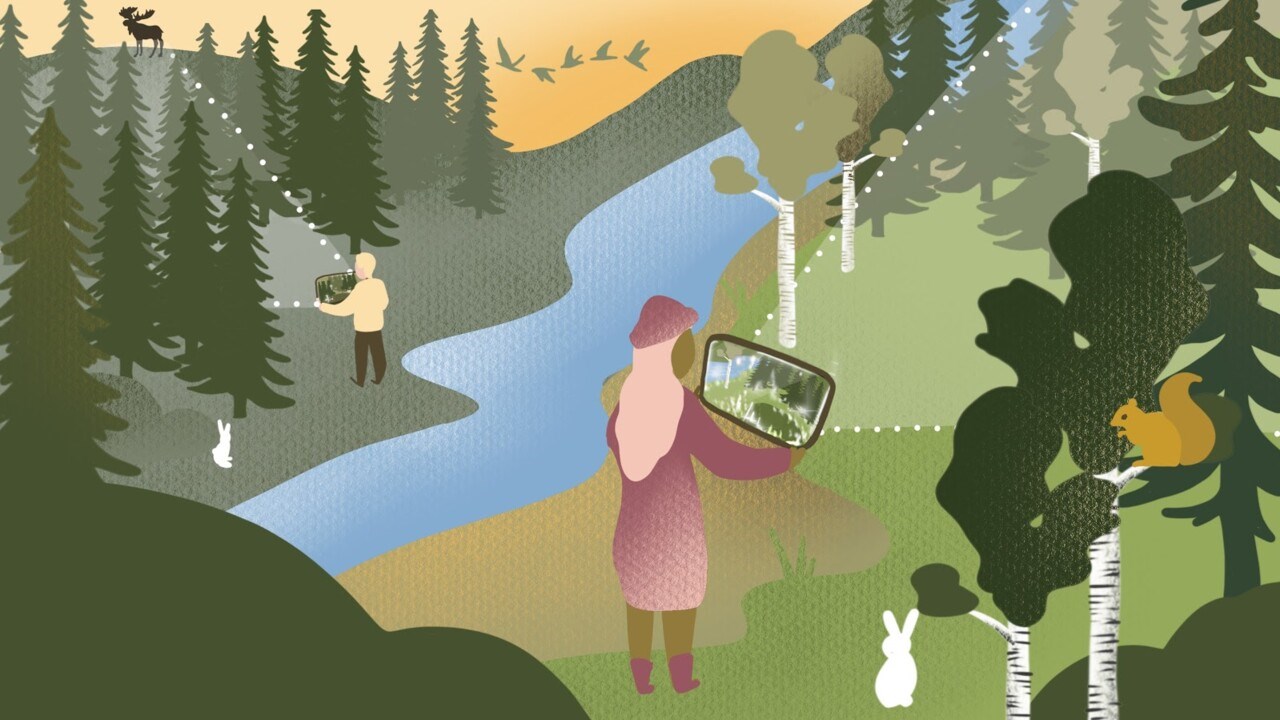
With nature as the client students at Umeå Institute of Design have investigated new perspectives in design and forestry.
ImageUmeå Institute of Design“In collaboration with these creative and smart students, we have had the pleasure of exploring new ways forward, with nature and man in focus. It is these types of ideas and concepts that are needed to take necessary steps towards the sustainable forestry of the future” says Linda Nyström, CEO of the Cluster of Forest Technology.
A platform for open dialogue between Sami people and forestry companies. Self-propelled forwarders acting as responsive employees in the forest. And drones that can be used both in forestry and in school education at the same time. These are some examples of what students at Umeå Institute of Design have come up with during the project. Most of them come from the bachelor's programme in industrial design, while some students from other programmes at Umeå University participated in the project via an independent course.
The project concept was created by Umeå Institute of Design in collaboration with the Cluster of Forest Technology with the aim of investigating new perspectives in design and forestry. All six design concepts developed by the students are summarized briefly below.
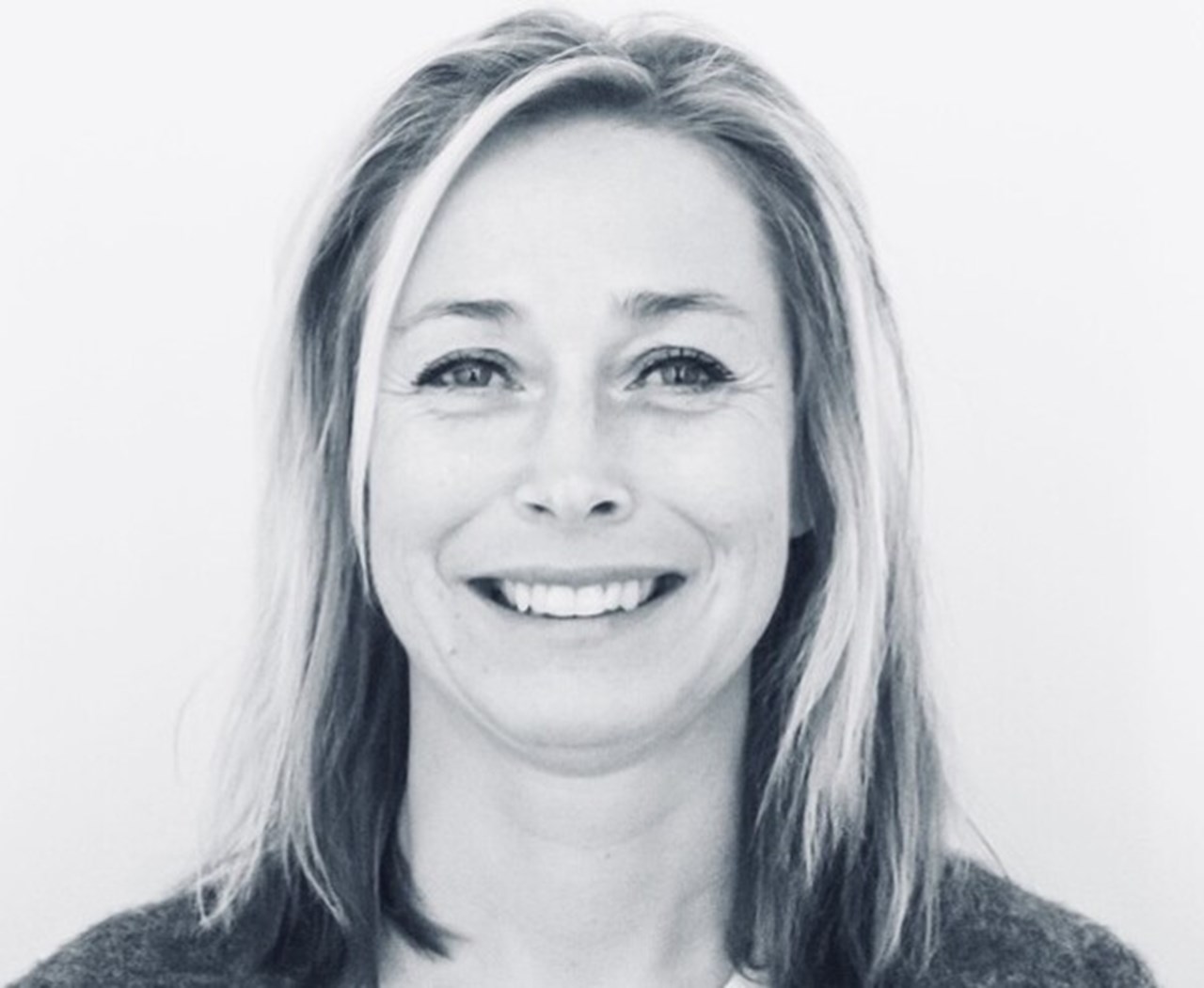
Monica Lindh-Karlsson.
ImageDesignhögskolan“By designating nature and man as a "client", we created an interesting shift in perspectives. It allowed us to see sustainability as a system in relation to other systems. The students have dealt with a very complex reality and I am deeply impressed by how they approached this challenge” says Monica Lindh Karlsson, senior lecturer in industrial design at Umeå Institute of Design.
A large number of stakeholders from the forest sector have participated in the project: Sveaskog, Holmen, SCA, Norra Skog, Cranab, Vimek, Algoryx, SLU and the forest contractors Gallringsproffs AB. Recently, Magnus Bergman, head of forest technology at SCA, followed the students' final presentations with great interest and he believes that several concepts and ideas can be useful in future efforts to develop the forestry industry.
“The students make new perspectives around our industry visible, giving me new and valuable insights. What at first glance might give the impression that "it is not possible", can give you food for thought that in the end makes you see whole new opportunities” he says.
Facts
Umeå Institute of Design at Umeå University is a highly regarded school for industrial design in Umeå, Sweden. Recently, the school ranked number one in the international Red Dot ranking, for the fifth year in a row.
The Cluster of Forest Technology is an economic association that supports the development of new technology for sustainable forestry, through collaborations between the forest industry and academia.
For more information, please contact:
Jens Persson, Communications officer, Umeå Institute of Design, Umeå University
Phone: +46907865063
Email: jens.persson@umu.se
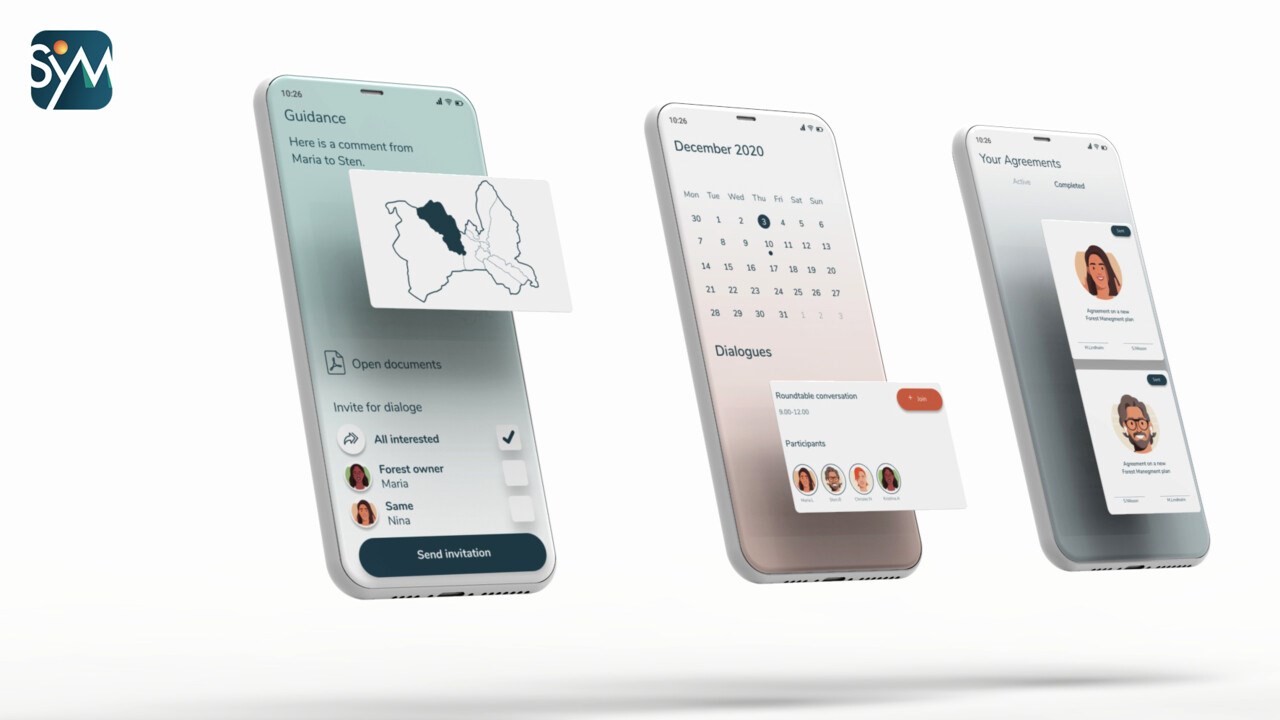
SYM is a digital platform that aims to increase the symbiosis between man and nature.
ImageUmeå Institute of DesignGroup: Emilia Bengtsson, Emma Sundin, Frida Åberg, Isac Klemets, Oscar Némethy och Thea Burlin.
The problem: In our research, we saw a need for a platform for an open dialogue between nature's various stakeholders. We therefore chose to investigate: How can a holistic perspective on forestry improve our symbiotic relationship with nature and contribute to creating a more sustainable future?
The solution: Our concept SYM is a digital platform that aims to increase the symbiosis between man and nature by opening up for a more democratic dialogue between all stakeholders in nature.
The goal: The goal of our digital platform is to create a stronger connection between man and nature, a connection that increases our awareness by opening up for dialogues in society where nature’s conditions are put in focus.
The experience: The project has challenged and broadened our perspectives. Who has the right to speak for nature? Is it possible to make all perspectives heard? Who owns the forest and how is ownership defined?
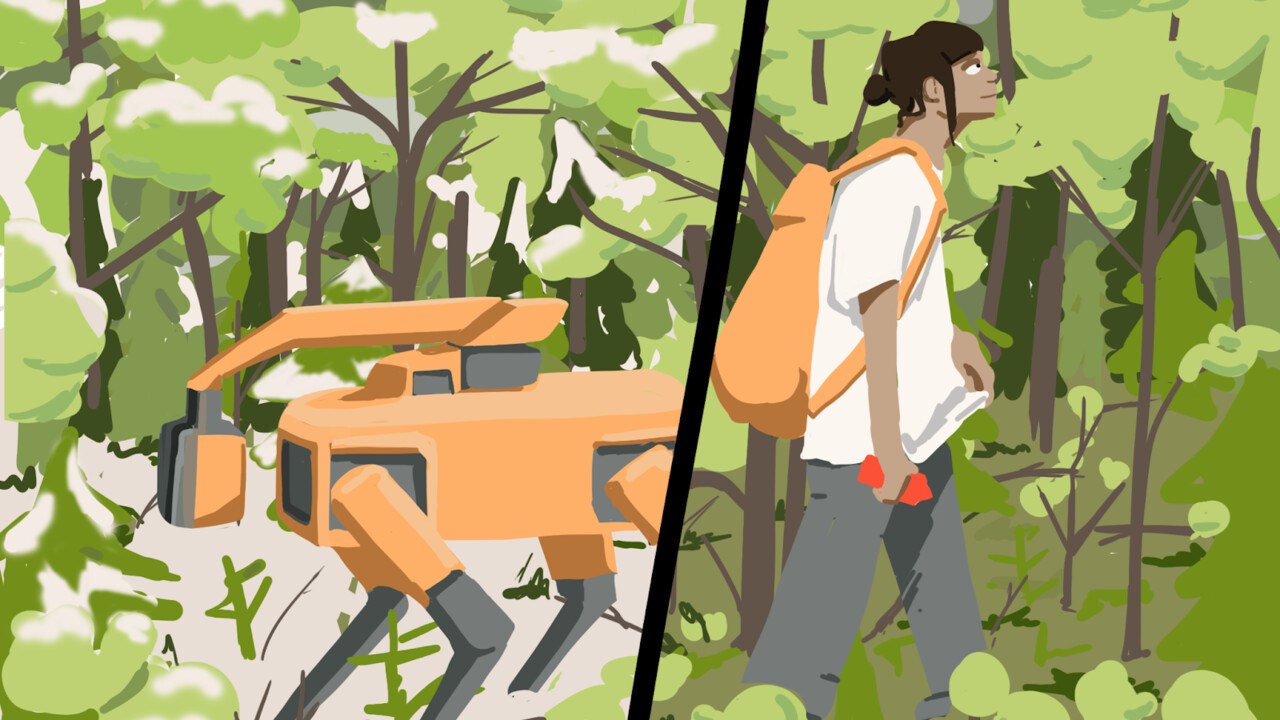
Forest Curator is a communicating link between forest and technology.
ImageUmeå Institute of DesignGroup: Algot Gustafsson, Axel Höijertz, Dana Hölzer, Karin Myhrberg and Stina Nilsson.
The problem: Our basic problem was to ensure the needs of both nature and the forest industry for a long-term, healthy relationship.
The solution: Our concept is based on separating man from machine in a new work role, the Forest Curator, which is the communicating link between forest and technology. A work role that can make decisions based on independent information and thus have a long-term approach to both nature and industry.
The goal: We hope that this concept leads to a healthier relationship between forest, industry and nature, where more conscious choices are made and the results are environmentally friendly while promoting nature's biodiversity.
The experience: Working with this project has been very challenging and interesting. Both in terms of the subject, having nature as a client, but also regarding the digital work situation. We have all gained a new perspective on nature and forestry during this project.
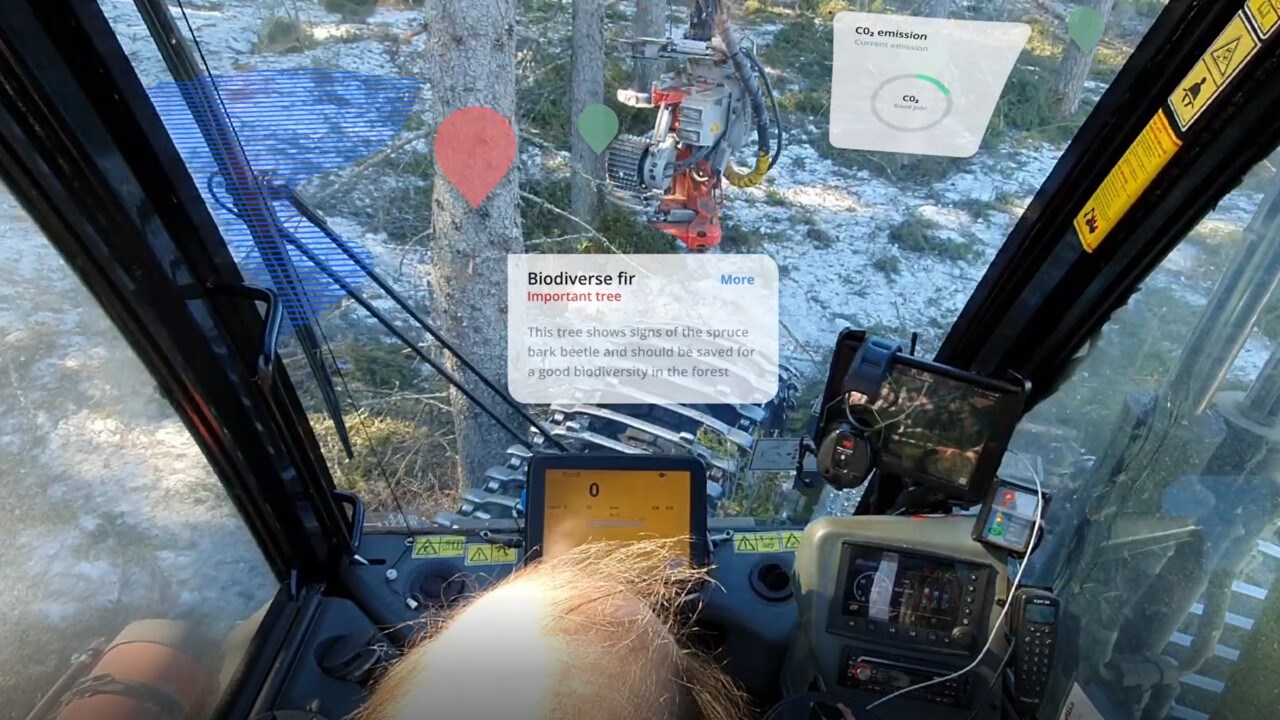
The AR box is designed to help the driver make the right decision in the forest.
ImageUmeå Institute of DesignGroup: Emanuel Berglund, Lisa Selin, Mathias Nordin, Flora Jameson, Nina Långströma and Joel Bystedt.
The problem: How can we ensure that the machine operator receives relevant information, so that his or hers decisions are effective, but also ethically and environmentally sound.
The solution: The concept consists of two parts; an app that both forest owners and machine operators use and an AR heads-up display that is located in the forest machine's glass pane. The AR box is designed to help the driver make the right decision in the forest, based on the need for biodiversity and efficiency. It can, for example, show which trees should be cut and which should be saved, and wetlands that should be avoided.
The goal: We hope that our concept can lead to forestry becoming more sustainable and at the same time the machine operators find it easier to make the right decisions.
The experience: It has been very interesting to work with this project, especially with nature as a client. It has opened up completely new perspectives and given us a completely different understanding of the needs of nature and how we humans often completely overlook these needs in order to instead focus on economic gain.
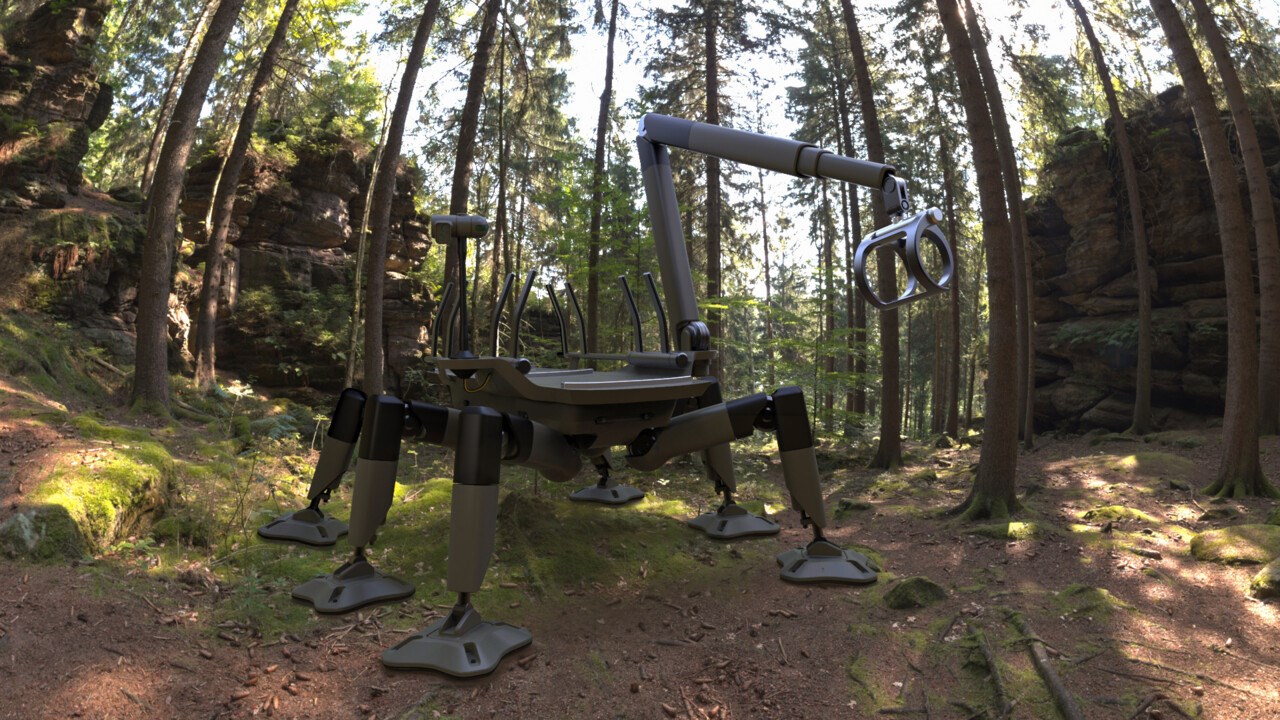
Ambulo System consists of a new, autonomous, forwarder with legs instead of wheels.
ImageUmeå Institute of DesignGroup: Ellinor Werner, Petra Persson, Oscar Olsson, Lisa Holmgren and Nikita Zatonskiy.
The problem: We saw a problem with soil compaction. A fully loaded forwarder can today weigh 40 tons, which is very stressful for the ground. In a future climate where more precipitation is expected, this problem will be further exacerbated due to the softer composition of the soil.
The solution: We call our solution the Ambulo System. The system consists of a new, autonomous, forwarder with legs instead of wheels. These smaller and lighter forwarders work together in groups in order to spread the total weight while at the same time maintaining a satisfactory production. The other part of the system is the planner, who has the important task of coordinating the forwarders' routes with the help of a digital map you wear on your arm and a stick that takes soil samples.
The goal: We hope that this project will be inspiring for the forest industry. Our project aims to shed light on current problems in timber transport at the felling site, and to contribute with a concept for a future solution.
The experience: It has been a challenge! We have had nature as our client, which was new to all of us. This raised interesting questions during the design process that have allowed us to develop or thinking. We have also gained great insight into the Swedish forest industry and the importance of sustainable forestry.
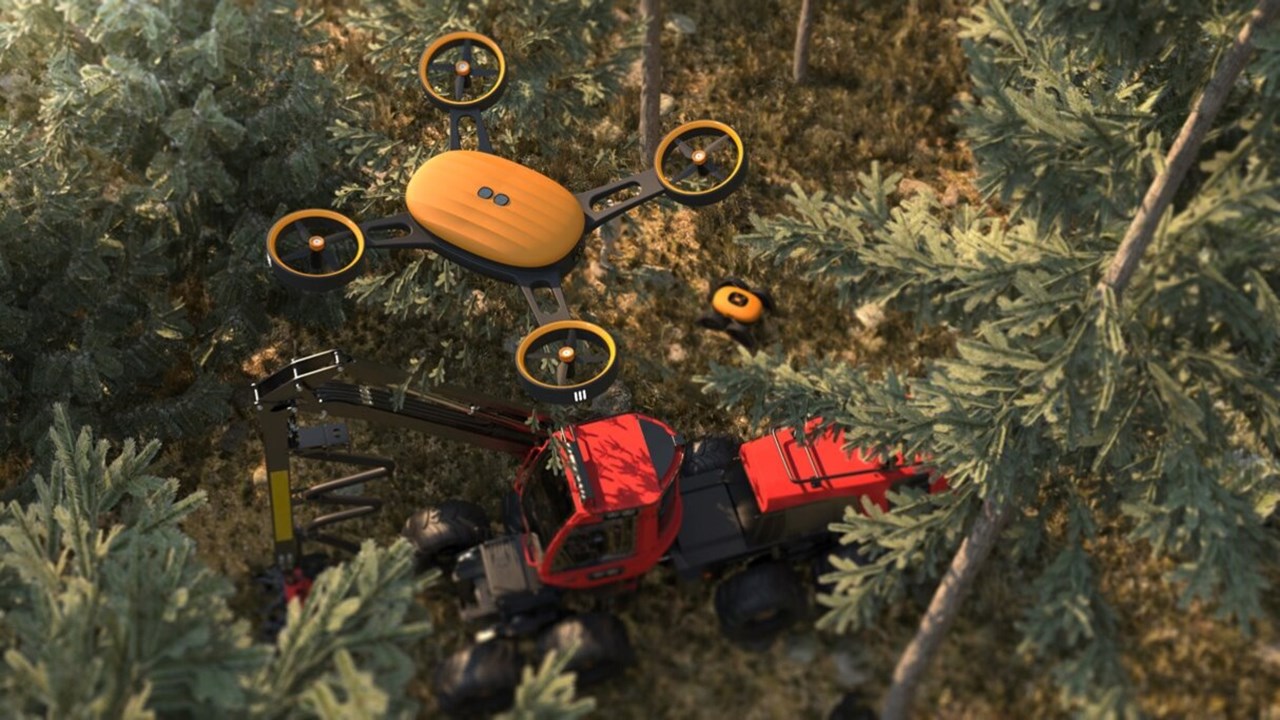
A system with ground-going vehicles, with associated drones to efficiently collect data from forestry.
ImageUmeå Institute of DesignGroup: Daniel Wikström, Emma Dahlgren, Linn Yue Thomessen, Lisa Karlsson, Lotta Sahlin, Patrik Härnvall and William Lantz Winberg.
The problem: Can drones be used as a tool to improve the relationship between nature and man?
The solution: A system with ground-going vehicles, with associated drones to efficiently collect data from forestry. This data should be easy to share between forest owners and can also be used in school, as educational material. For the educational material, there is an interactive AR-based app, developed for children, to help them learn more about the forest, nature and forestry.
The goal: A healthier view of forestry with greater transparency and more sustainable thinking. We also hope to give people in modern society a stronger connection and relationship to nature.
The experience: We have learned how difficult it is to have nature as a "client" and how different views and ideas us humans can have on what nature really is.

Credula Scanner interactively affects the user emotionally, by illuminating life in nature that is otherwise invisible.
ImageUmeå Institute of DesignThe group: Hadi Hussein, Frida Ylitalo, Hanna Nilsson, Sanna Riihimäki, My Enetjärn, Mika Sinclair and Jesper Mattsson
The problem: How can we create conditions for biodiversity and move the forest industry towards a more sustainable generational legacy? We saw two narratives that were connected but required different solutions. Partly how we humans value nature and in the long run create companies based on these values, partly the forest industry's twofold demands to protect biodiversity and to meet the market's need for materials.
The solution: Part of our solution is Credula Scanner, a heat-seeking software that interactively affects the user emotionally, by illuminating life in nature that is otherwise invisible to the naked eye. We also propose a new system for dividing the forest into sections that help the forest user to separate the areas and protect larger parts of the forest from a natural occurrence.
What do you hope this could lead to? We hope to inspire the individuals behind the companies to reflect on their personal values and investigate whether these are expressed in their business models. The objective solutions are practical and can be implemented today, and we hope to be able to inspire change.
The experience: We can all agree on the importance of biodiversity. It permeates all systems and is the basic complex foundation on which all life depends. We can argue in an emotional and rational way with a research basis for our solutions, and that knowledge is highly valued by all members of the group.